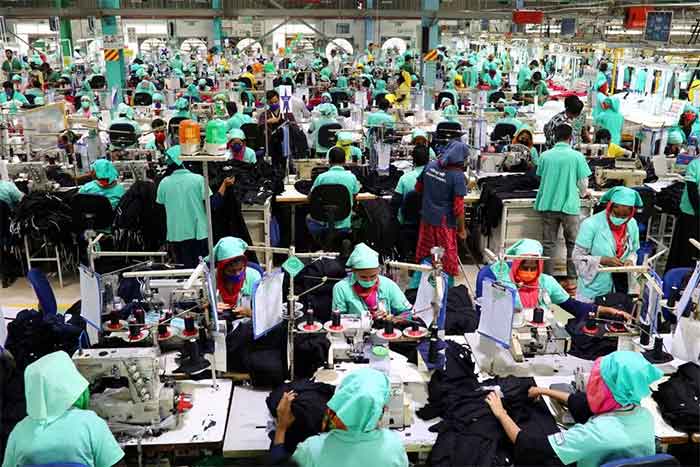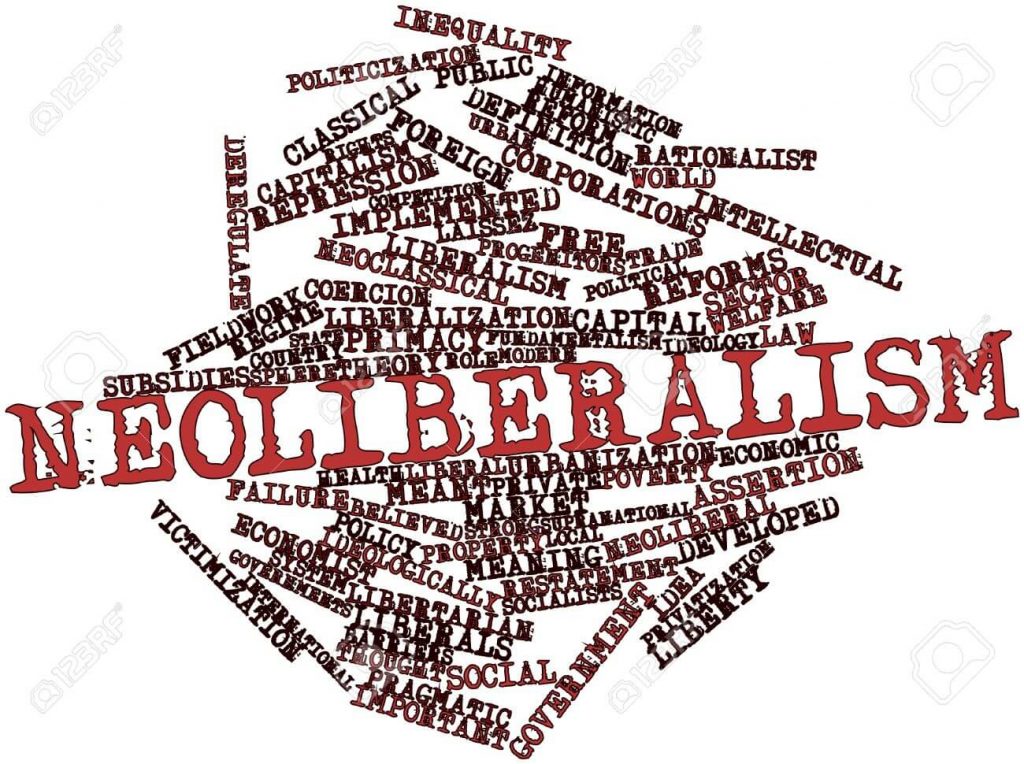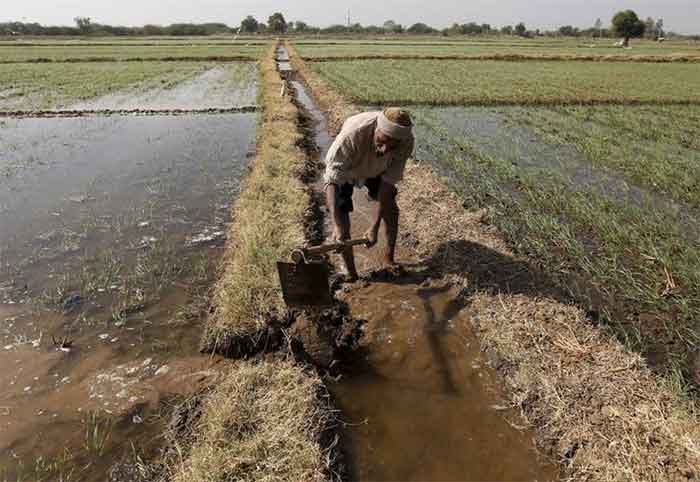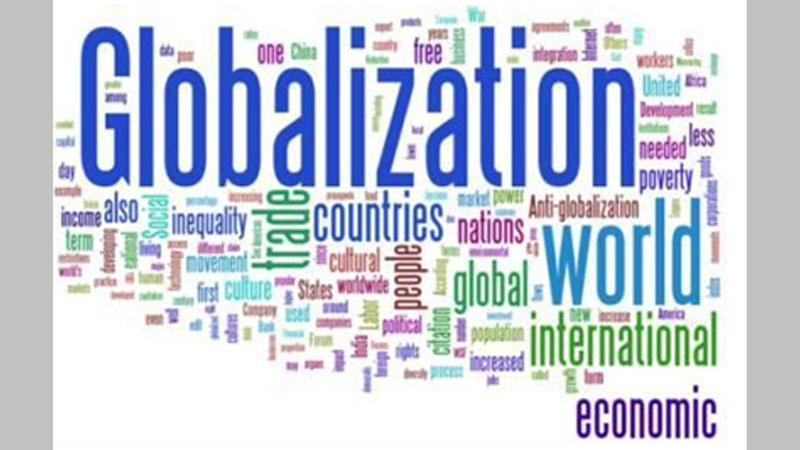
IMF and WB do not function like UN agencies on a ‘One nation, one vote’ system. Voting power is pegged to the size of economy and on financial contribution to the WB.
The after effects of some of the decisions of IMF/WB are as under:
In 1994, Zambia declared that it could not hire an additional 9,000 school teachers it needed, not because it did not have requisite funds, but because IMF/WB had put a cap on the % of GDP that could be spent on wages (1).
Argentina, once the much touted star pupil of IMF/WB, has had to rely on WB/IMF loans to pay interest on its massive loans incurred by military dictators. Privatization led to the loss of health care for millions. Other welfare benefits too went down the drain.
It resulted in deadly public riots in December 2001. The country became the largest defaulter to private banks in history. GDP plummeted 11% in 2002, and unemployment rose to 20%. People rummaged for food in garbage. (2)
IMF advised more cuts in public spending, to back down only when Argentina threatened to default to all lenders. Growth restarted only when the country rejected IMF advice on spending and re-nationalized some services.
WB:
It has 10,000 employees, has offices in 109 of 184 member countries, and lends more than $20.00 billion a year. It has SAP (Structural Adjustment Program) similar to that of IMF, and lends for dams and power plants, and funds agricultural modernization programs. The Bank’s Articles of Agreement, however, state that the principal goal is “To promote foreign private investments”. The U.S. treasury claims that for every dollar it contributes to WB, US corporations receive $1.30 in procurement contracts” (3).
It has financed 550 dams valued at $86 billion in the last 60 years, which have displaced 10 million people and have had devastating effect on ecology . World Commission on Dams found that the Pak Mun Dam in Thailand caused 60 to 80% decline in the fish catch upstream of the dam. (4).
In April 2013, Oil Change International wrote a letter to WB president Dr Jim Yong Kim, on behalf of civil society groups from more than twenty countries, asking him to stop financing fossil fuel projects. The largest beneficiary is Halliburton of Dick Cheney, VP of the USA 2000 to 2008 (5).
Chad-Cameroon Pipeline was financed with $3.7 billion in June 2000, without ever offering a comprehensive social or environmental impact study. Friends of Earth contend that 2000 gallons of oil per day could leak from the 600 mile pipeline per day. European and the US companies given oil contracts are exempt from paying Chad taxes. (6).
WTO:
Post WW II government negotiators proposed an International Trade Organization with social goal of balancing liberalization of global trade while stimulating full employment, and the principle that poorer nations deserved special treatment in trade to close the gap between the poor and the rich nations. (7).
The US Senate vetoed the proposal. A much smaller GATT was formed which aimed at reduction of trade barriers in goods and services, with no measure for full employment; instead it dictated that all countries must treat all goods from all countries on equal grounds.
Tobacco Companies went to work starting in 1980’s. They made large contributions to political parties and candidates in the US. The US government threatened the governments of Japan, Taiwan, South Korea and Thailand to open their markets to tobacco or face sanctions and charges under anti-discriminatory laws of GATT. National Bureau of Economic Research found that cigarette consumption rose by 10% in the four countries in 1991 (8).
US government started planning to replace GATT with a larger organization with greater powers. Negotiations were completed in 1994; WTO came into being in 1995.
In addition to focusing on tariffs as GATT did, WTO worked to eliminate non-tariff barriers which include health, environment and public interest regulations, as well as any laws which give advantage to local firms over foreign ones. Any member can challenge another member country’s laws. Cases are heard in camera in Geneva. An adverse finding will lead to sanctions if the country does not amend laws. (9).
In December 1999, tens of thousands of public campaigners converged on Seattle to protest against WTO. The next meeting was held in Qatar, Doha with plans for a new round which was held in Cancun, Mexico in 2003, where the streets were filled with protesters. Inside the negotiating halls, the government delegations fought too. (10).
Several LDCs led by Brazil, South Africa and India rejected DC proposals especially in the field of investment which would offer opportunities for expansion to Western corporations. They argued that Western countries should open their markets by cutting agriculture subsidies. (11).
WTO challenged US Clean air Act. The US caved in, and weakened cleanliness standards required of gas importers. W.T.O also challenged US Dolphin and Sea Turtle protection and Japanese ban on invasive species bearing fruit, and European restrictions on hormone-injected beef. (12).
Union members formed the majority of protesters in Seattle, contending that W.T.O granted sweeping powers to corporations. (13).
In the former Soviet Union and LDCs, Multinational Corporation growth and share rose to unprecedented levels via displacement of local/indigenous trade/industry. G7 despise the competition of the liberal philosophy and support mergers in contempt of it.
Global and economic integration leads to curbs on local capital and social strife (14).
Since 1980, all debt crises dealt with the same IMF formula in one hundred and fifty countries.
In Latin America, most military regimes replaced with “Democratic” ones, were tasked with working national economy under WB privatization agenda.
On 7/28/1990, Alberto Fujimora, president of Peru, adopted Neoliberal reforms; fuel price went up thirty one times, bread twelve times, in a day.
The results of these “Reforms” were much worse in democracy than under the dictatorships in Chile and Argentina (15).
In 1980, IMF insistence on opening up to US and European grain supplies was the end of Self-sufficiency in food in Rwanda (16).
The same pattern was repeated in India, Bangladesh, Vietnam, Kenya, Nigeria, Morocco and Philippines.
In 1992, adoption of Neoliberal regime drove vast areas in the former Soviet Union into abysmal poverty. In 1995, WTO entrenched rights to banks and MNCs. Public debt increased enormously, state institutions collapsed. Private wealth increased massively; national sovereignty and citizen rights were curbed. (17).
Iraq has 11% of world’s oil reserves, five times that of the US. The region from the tip of the Arabian Peninsula to the Caspian Sea has 70% of the world’s oil and gas reserves. (18). After 13 years of crippling economic sanctions, the country was invaded in 2003, infrastructure was destroyed, and over a million killed. (19). The American led war with a huge military machine pushed corporate global agenda. External debt of Iraq was used as an instrument of economic plunder.
9/11 was used to legitimize Global Free Market.
Post-Cold war period reversed the gains of post WW II de-colonization, destroyed stable prices of 1970’s, natural environment, enhanced racism, ethnic strife, social apartheid and damaged HR and Women’s rights. It went to hyperinflation, loss of jobs and poorer health care. Cholera and TB incidence went up at an alarming pace in the region of the former Soviet Union.
The economic devastation of the former Soviet Union has been replicated in Eastern Europe. (20).
During the 1997 Asian Crisis, predatory speculators transformed the Asian tigers
(Indonesia, Thailand and South Korea) to sacrificial goats. In South Korea, after IMF intervention, two hundred companies closed, 4,000 workers were thrown out of jobs every day. (21). In Indonesia wages fell in sweatshops from $40 a month to $20; there were widespread food riots.
In China, thirty five million were laid off (22).
In the West, the duo of Thatcher and Reagan gradually dismantled the welfare state. An entire generation lost jobs (23); unions were busted, young put against the old and company health insurance cut back. Since 1980’s, Third worldization of the workers has pushed them into minimum wage jobs and promoted division in classes and ethnic groups. (24).
Free market has internationalized crime; syndicates are free to buy under cover of privatization. According to the UN, Transnational Criminal Organizations (TCO) own assets of $ one trillion; equal to the total income of mid-income level countries with a population of 3 billion (25). Organized crime outperforms fortune 500 companies. (26).
Downsizing, restructuring and outsourcing by hiring cheap labor and bringing down wages in Less Developed Countries (LDC) and in Developed Countries (DC), do not allow Technological and scientific advancement to reduce poverty. Capital migrates in search of cheap labor. Unemployment figures have reached 1 billion, 1/3 of the whole work force. (27).
Stagnation in supply of necessities, investment in luxury goods and profit sought through speculation leads to disruption of financial markets. The number of billionaires in the US increased from 13 in 1982 to 149 in 1996 and to 300 in 2000. Wal-Mart family is worth $ 85 billion (GDP of Bangladesh is $33.4 billion). (28).
Speculation makes more billionaires. (29). They take the loot to off shore accounts. Merrill Lynch estimated off shore accounts at $ 3 trillion of private individuals. IMF estimates that individual and corporate account together at $ 5.5 trillion. Third world loot in Swiss banks, mostly stolen money, is estimated at $600 billion.
Sub-Saharan garment industry was wiped out by US imports of used clothing at $80 a ton. (30). In the former Soviet Union and LDCs, Multinational Corporation growth and share rose to unprecedented levels via displacement of local/indigenous trade/industry.
Genesis of Wealth Concentration
The number of billionaires going up is directly proportional to hundreds of million individuals sliding below the poverty line.
The number of billionaires in the world in 2006 was 793, (worth 3.5 trillion) and in a year it grew to 946. India had thirty six, the highest number in Asia with total wealth of $191 billion. China has 20 billionaires worth $29.4 billion. (31).
In 2014, the number of billionaires in the world had risen to 1,645, with net worth of 6.4 trillion, up from 5.4 trillion a year ago. India had 56, while China had 152. Russia, a relatively new entrant to the list had 111. (32).
The total wealth of the global ruling class continues to grow, while income levels for the poor continue to fall in all the capitalist countries. Put another way, eighty five richest people in the world own as much as the entire half of the World’s population. (33).
The increase in wealth mostly came from speculation on equity markets, real estate and commodity trading, rather than from technical innovations, investments in job-creating industries or social services. (34).
The Russian oligarchy stands out for its corrupt origin. Over two-thirds (67 per cent) of them began their concentration of wealth during the 1990’s under the quasi-dictatorial rule of Boris Yeltsin and his US-directed economic advisers, Anatoly Chubais and Yegor Gaidar. The entire economy was put up for sale for the ‘Political price of supporting Yeltsin in his bid for re-election, at well below the real value. (35).
Without exception, the transfers of property were achieved through gangster tactics, assassinations, massive theft, and seizure of state resources, illicit stock manipulation and buyouts.
The future billionaires stripped the Russian state of over a trillion dollars’ worth of factories, oil, gas, iron, and other formerly state-owned resources. (36).
Though the corporate owned Western media would tell us otherwise, very few of the top former Communist leaders are found among the current Russian billionaire oligarchy. Contrary to the spin-masters’ claims of ‘Communist inefficiencies’, the former Soviet Union developed mines, factories, and energy enterprises were profitable and competitive, before they were taken over by the new oligarchs. (37).
Wealth was seized by armed private mafias who quickly corrupted, intimidated or assassinated senior officials in the state. They became the prime beneficiaries of Boris Yeltsin’s mindless contracting of ‘Free Market’ Western consultants. (38).
The famous Forbes magazine’s yearly list of the richest individuals characterizes the Russian oligarchs as ‘self-made’ as if stealing state property was the same as entrepreneurial skills. (39).
The ‘Shock Treatment’ of vast and immediate privatizations of almost all public enterprises by the Gaidar/Chubais team was encouraged by a Harvard team of economic advisers and especially by US President Clinton, in order to make the capitalist transformation irreversible. It led to the capitalist gang wars and the dis-articulation of the Russian economy. As a result there was an 80 per cent decline in living standards, a devaluation of the Ruble and the sell-off of invaluable oil, gas and other strategic resources at basement bargain prices to the predator billionaires and multinational corporations. (40).
Over a hundred billion dollars a year was laundered by the mafia oligarchs in the principal banks of New York, London, Switzerland, Israel and elsewhere, which would later be recycled in the purchase of expensive real estate in the US, England, Spain, France as well as investments in British football teams,
Israeli banks and joint ventures in minerals. (41).
The gangster-oligarchs consolidated and expanded from multi-millionaires to billionaires, to multi-billionaires. The new Russian oligarchs had ‘arrived’ on the world financial scene, according to the financial press. (42).
But President Putin pointed out, the new billionaires have failed to invest, innovate and create competitive enterprises, despite optimal conditions. Few of the oligarch-owned manufacturers are earning foreign exchange, because few can compete in international markets. The oligarchs have ‘diversified’ into stock speculation (Suleiman Kerimov $14.4 billion), (Mikhail Prokhorov $13.5 billion), banking (Friedman $12.6 billion) and buyouts of mines and mineral processing plants. (43).
The Western media focused on the falling out between a handful of Yeltsin-era oligarchs and those who made it under President Vladimir Putin. However, the biographical evidence demonstrates that there is no rupture between the rise of the billionaires under Yeltsin and their consolidation and expansion under Putin. (44).
In the mid-19th century, Honoré Balzac, surveying the rise of the respectable bourgeois in France, pointed out their dubious origins: “Behind every great fortune is a great crime.” (45).
The swindles begetting the decades-long ascent of the 19th century French bourgeoisie pale in comparison to the massive pillage and bloodletting that created Russia’s 21st century billionaires.
Corporate Crimes:
Bhopal, Pesticides and DOW offer perhaps the most succinct and poignant example of genocide perpetrated by capitalism.
Though the US Securities and Exchange Commission (SEC) determined that in order to introduce numerous pesticides that fell outside Indian regulations, Dow made improper payments to regulatory officials in India, yet the Indian government refuses to take an action against it. (46).
The US SEC fined Dow Chemical with a civil penalty of $ 325,000.00, after reports of improper payments to regulatory officials in India had emerged from the company’s own accounting. De-Nocil, the then subsidiary of Dow Chemicals, reportedly made payments of up to 8.8 million Indian rupees (Rs 45 to $ 1 in 2007) (reported to have been made), to get regulatory clearances for Dow’s pesticides business in India during 1996 and 2001. (47).
The web-site of AgroSciences India shows the the following brand names and chemical names of Dow pesticides for the period 1999-2001:
Atracil 50% WP (Atrazine), Saviour (Mancozeb), Delthene (Acephate 75% SP), Vapona (Dichlorvos 76% EC), Goal (Oxyflourfen 23.5% EC), Dursban 10G (Chlorpyrifos 10%G), Bengard 50% WP (Carbendazim 50% WP), Nurelle D 505 (Chlorpyrifos 50% EC + Cypermethrin 5% EC), Cilcord 10% EC (Cypermethrin 10% EC), Miraculan (Triacontanol 0.05% EC), Cilcord 25% EC (Cypermethrin 25% EC), Trooper 75% WP (Tricyclazole 75% WP), Pride 20% SP (Acetamiprid 20% SP), Clincher 10% EC (Cyhalofop butyl), Treflan 48% EC (Trifluralin 48% EC), Monocil 36% SL (Monocrotophos), Success 2.5% SC (Spinosad 2.5% SC), Magister 10% EC (Fenazaquin 10% EC), Miticil 50% EC (Ethion 50% EC), and Tracer 45% SC (Spinosad 45% SC). (48).
Dow Chemical is the owner of Union Carbide Corporation, which was responsible for the Bhopal genocide and the subsequent poisoning of thousands of lives that continues to this day due to contamination from tons of toxic chemicals lying around in the factory premises. Dow Chemicals to this day has not accepted its liability. (49).
Dow Chemical continues to sell in India some Class I pesticides like Monocrotophos while most of the developed world had banned this pesticide years ago.(50).
Dow’s dishonest practices have been highlighted a number of times by many activist groups in the country, notably those of Bhopal disaster survivors. For instance, Dow Corning, a joint venture of Dow Chemicals, obtained regulatory approval from the Maharashtra Pollution Control Board for setting up a factory near Pune, despite submitting a map of one of its factories in the USA instead of a local site map as required by Indian law. Ref (51).
There is no independent scrutiny of data related to safety and efficiency; it is the industry-generated and sponsored data that is used as the basis for decision making.
Corrupt practices in pesticide registration have been highlighted by vigilant media several times in the past. However, no action has been taken to improve the regulatory systems. The existing regulations are hardly enforced.
Dow, for instance, recommends several of its pesticides for crops and uses not recognized by the Central Insecticides Board and Registration Committee [CIBRC] as per its public database. This is a blatant violation of the Insecticides Act. (52).
Pesticides not acceptable according to CIBRC guidelines under Dow brand name are Atrazine (Atracil), Mancozeb (Saviour), Dichlorovos-76% EC (Vapona) 76% EC, Oxyflourfen 23.5% EC (Goal), Spinosad 45% SC (Tracer 45% SC).
The capitalist controlled Indian government took no effective action. Here
Bibliography & References:
(2). Phillip, Arthur and Johnston, Jake, “Argentina Vs the Vultures: What You Need to Know,” Center for Economic and Policy Research, Washington DC April 2, 2013
(3). Mosley, Paul, et al, “Aid and Power: The World Bank and Policy Based Lending,” (Abington, U.K: Routledge, 1995).
(4). aanesan.wordpress.com/2011/02/28/pak-mun-dam-update/
(5). https://www.greenleft.org.au/node/26427
(6). www.umich.edu/~snre492/Jones/pipe.htm
(7). Bossche, Peter Van den and Zdouc, Werner, “The Law and Policy of The World Trade Organization,” (Cambridge, UK: Cambridge University Press, 2013).
(8). www.nber.org/papers/w10948.pdf?new_window=1.
(9) ibid 7.
(10). www.oocities.org/ericsquire/articles/wto/reuters030905/htm
(11). www.indiadaily.com/editorial/1990.asp
(12). www.wto.org/english/thewto_e/whatis_e/tif_e/disp3_e.htm
(13). en.wikipedia.org.wiki/Occupy_seattle
(14) James Petras, Global Research, March 23, 2007. www.globalresearch.ca/john-dugard-james-petras-and-keith-harmon-snow-on-the-global0research-news-hour/12852
15 (1). “Peru, Policies to Stop Hyperinflation and Initiate Economic Recovery,” (Washington: World Bank, 1989), p 10
- FAO Communique March 1994.
- “Russian Economic Reform, Crossing the Threshold of Structural Reform,” (Washington, DC: World Bank, 1992), p 18.
- www.indonesia-digest.net/5010secrecyrule.htm)
- www.thirdworldtraveller.com/Chossudovsky_Michel/SovietUnion_GPNWO.html
- Bullard, Nicola, Bello, Walden and Malhotra, Kamal, “Taming the Tigers: The IMF and the Asian Crisis,” Special Issue on IMF, Focus on TradeNo. 23, Focus on Global South, Bangkok, March 1998.
- ibid
- Silber, Earl and Ashby, Steven, “UAW and the ‘Cat’ Defeat,”Against the Current, July-August 1992.
- www.worldbank.org/en/country/russia/overview
- Brandt, Daniel, “Organized Crime Threatens the New World Order,”Namebase Newsline, Ohio no 8, January-March 1995.
- ibid
- “Second World Employment Report,” (Geneva: International Labor Organization, 1996).
- Norman, Al, “Slam-Dunking Wal-Mart: How Can You Stop Superstore Sprawl in Your Hometown,” (Atlantic City, N.J.: Raphel Marketing, 1999).
- Khor, Martin, “SEA Currency Turmoil Renews Concern on Financial Speculation,” Third WorldResurgence, no 86, October 1997, pp 14-15.
- Chossudovsky, Michel, “The Globalizationof Poverty and the New World Order,” (Montreal: CRG, 2003).
- en.wikipedia.org/wiki/List_of_countries_by_the_number_of_US_dollar_billionaires
- ibid.
- www.forbes.com/sites/laurashin/2014/01/23/the-85-richest-people-in-the-world-have-as-much-wealth-as-the-3-5-billion-poorest/
- ibid 14
- ibid 14
- ibid 14
- www.globalresearch.ca/global-ruling-class-billionaires-and-how-they-made-it/5159
- Klein, Naomi, “The Shock Doctrine,” (New York: Random House, 2009).
39. en.wikipedia.org/wiki/Russian_oligarch - Ibid 37
- ibid 38
- ibid 38
- ibid 39
44. ibid 39 - https://www.goodreads.com/quotes/222564-behind-every-great-fortune-there-is-a-crime
- www.sec.gov/divisions/corpfin/cf-noaction/14a-8/2014-amnestyinternational031814-14a8.pdf.
- ibid 45
- www.dowagro.com/india/index.htm
- ibid
- Mrzine.monthlyreview.org/2007/amr121107p.html
Bio:
I was born in Dewa Sharif, UP, India in 1939.
I went to school from the fourth to eighth class in Gonda, UP and the 9th grade in Jhansi, UP, India.
We moved to Quetta, Pakistan and went to school for the 10th grade and intermediate college in the same town.
I was in Karachi University 1954-57, then Dow Medical College 1957-62. I Was in the National Students Federation from 1954 to 1962, trained in surgery in the Civil Hospital Karachi 1962-65, proceeded to England 1965 and trained in General surgery and orthopedic surgery till 73, when I left for Canada 1973-74, USA 1974-83, back to Karachi 1983 and built a hospital and went back to the USA in 1991, been in the USA since.
I retired from surgery in 2005.
I have worked in various HR and Socialist groups in the USA.
I have Published two books ,”A Medical Doctor Examines Life on Three Continents,” and ,”God, Government and Globalization”, and am working on the third one, “An Analysis of the Sources and Derivation of Religions”.
IF YOU LIKED THE ARTICLE SUPPORT PEOPLE’S JOURNALISM















































